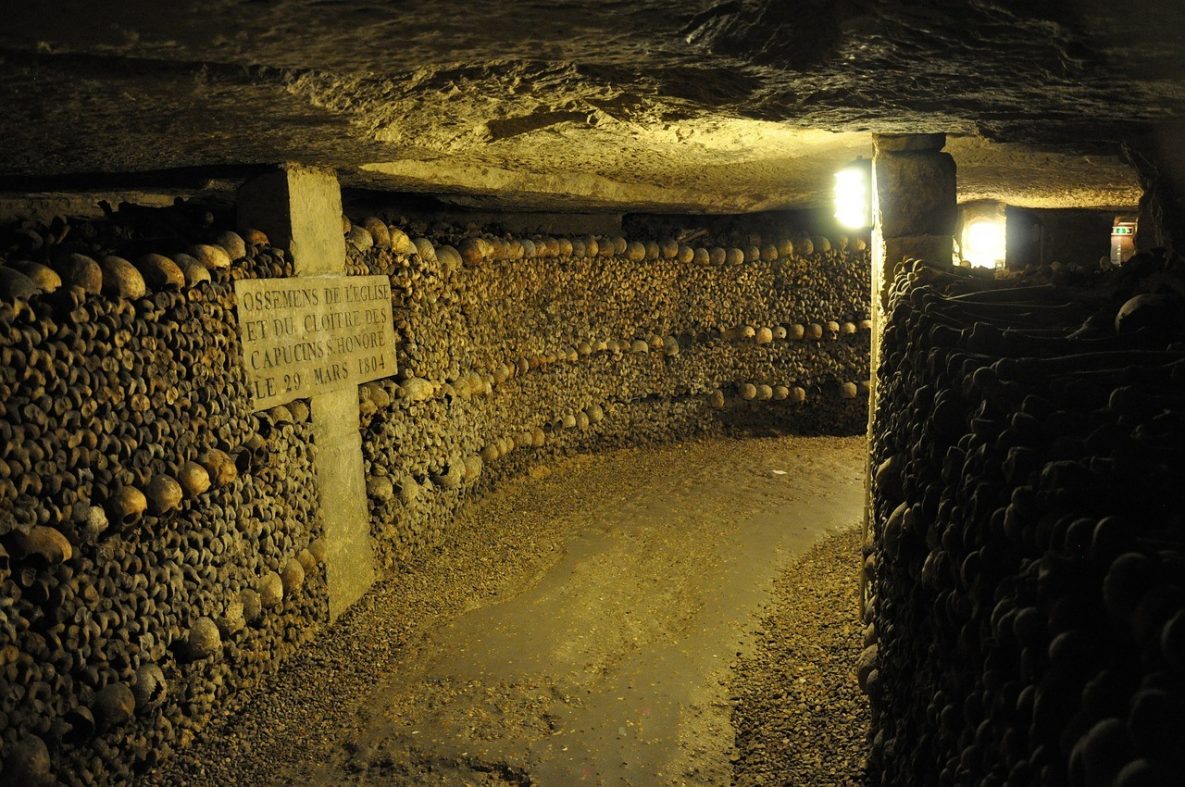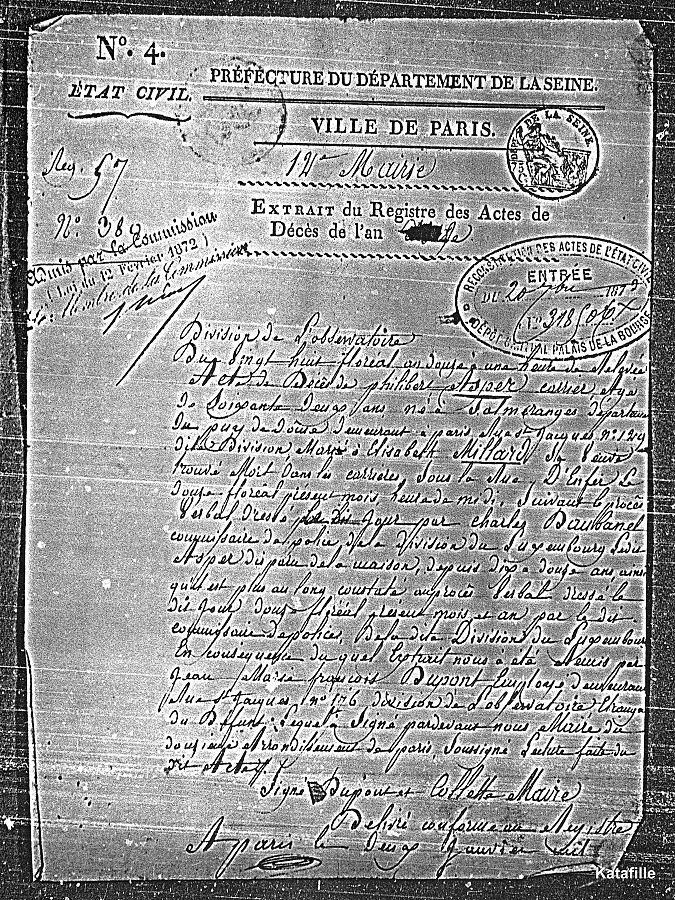
Underneath the streets of the famous city of light lies a dark labyrinth of more than 6 million skulls from former Parisians. This famous tourist location called the “Catacombes de Paris” or Catacombs of Paris is the exact opposite of the lively lights and luster of the capital city of France.
Catacombs are known for its creepy network of tunnels layered with skeletal bones and eerie caves and quarries that stretch hundreds of miles beneath the ground.
These catacombs are former quarries in the past known as “Tombe-Issoire.” However, during the late 17th century, while in the midst of a problem with overflowing cemeteries, a wall around the “Les Innocents” (largest cemetery in Paris) collapsed. It was then that the Paris Catacombs were developed.
Today, the official Catacombs that the public can explore is about 2 kilometers, while the connected quarries and caves are about 300km long. These unofficial quarries are prohibited part of the Catacombs. However, people didn’t stop from exploring these banned areas.
In this article, we will discuss the people who lost their way in the Catacombs of Paris.
The Man who lost His Way?
Back in 2000, ABC Family aired a special documentary on The Catacombs, which showed a footage of an unidentified man who lost his way in the dark tunnels of the ossuaries. The clip was part of the documentary show, which was directed by Francis Freedland.

In the footage, the man was walking in the labyrinth accompanied only by his camcorder. At the start of the video, skeletal bones were scattered on his path while he was exploring the deep passageways.
As he continued to walk, he saw some cryptic sketch on the wall. It was presumed to mark the gates of hell or something he wasn’t supposed to see. Right after the creepy image on the wall, the man in the video seemed to become more panicked. He started scurrying as if he had seen something so frightening. Then, he suddenly dropped his camcorder but it kept rolling as his footsteps vanished off into the darkness. The camcorder as seen in the documentary just continued playing until it had run out of battery.
After some years, the camcorder was found by catacombs explorers and was used as part of the documentary led by Freedland. It was unclear if the man survived or died after the camera went out of battery. His remains were never seen until now.
According to some skeptics, the footage was fake and staged by the makers of the TV special. The full actual video was never out to the public. The only thing that people can infer from watching the video is how frightened the man was that he actually dropped his camcorder, the only source of light he had.
Until today, the video remained a mystery to everyone. There are many assumptions about the authenticity of the video but no conclusive evidence was found. If only the man’s body was recovered or he actually revealed his identity in public, then that’s the only way we can know the truth.
The Doorkeeper
The unnamed man who got lost in the Catacombs never returned alive nor dead but there is one man who came back after exploring the Catacombs. He is Philibert Aspairt.
He was the first man who lost his way in the catacombs. Aspairt was a doorkeeper of a hospital named “Val de Grâce”. It was said that he deserted his post and went into the Tombe-Issoire (now Catacombs of Paris), which had a passage in the hospital. He wanted to look for the Chartreuse liquor stocked somewhere in the monastery, but his only candle went out while he was in the Catacombs. He was lost in the labyrinth and eventually died in November of 1793. His remains were discovered in 1804 and the hospital key ring that he had identified his body. Philibert Aspairt was later then considered as the first Cataphiles (known now as illicit urban explorers). His gravestone is in the restricted area of the catacombs and it became a pilgrimage destination.
The Aspairt story can be deduced as an account of history. Studies were made and there was some evidence that can verify this legend.
You can see in the photographs (above) that there are still some inconsistencies due to different surname spelling and date of death. However, with constant evolution, spelling names can change over time and the dates might have been wrong due to calendar conversions.
The story of Aspairt’s body returning after more than 10 years is a proof that Catacombs are indeed a maze of no return. This is because he never actually returned alive, but came back as skeletal remains.
Latest Lost Stories of Catacombs
On June of this year, two teenage boys were rescued after 3 days of being lost in the Catacombs of Paris. According to reliable news sources, they were taken to a hospital and were treated for hypothermia. A spokesperson from the Paris fire service said that tracker dogs helped them with their rescue efforts.
This story of a 16 and 17-year-old teenagers are added proof that somewhere in the depths of the Catacombs lies a mysterious maze of no return. If the rescuers were a little bit late, the kids could have died of hypothermia.
Conclusion
Catacombs of Paris is like a labyrinth with no way out. It’s a complex and eerie structure designed to make people marvel at its mysteries. If you want to explore this place without any help from the outside world, then you’re bound to get lost in its darkness.
https://en.wikipedia.org/wiki/Catacombs_of_Paris
https://en.wikipedia.org/wiki/Philibert_Aspairt
http://www.dailymail.co.uk/news/article-4604220/Two-teenagers-rescued-Paris-catacombs.html




